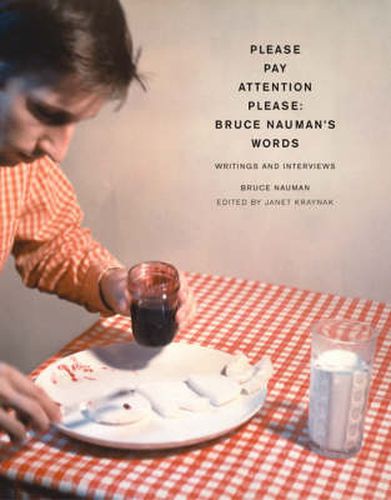Readings Newsletter
Become a Readings Member to make your shopping experience even easier.
Sign in or sign up for free!
You’re not far away from qualifying for FREE standard shipping within Australia
You’ve qualified for FREE standard shipping within Australia
The cart is loading…






Unlike many of his contemporaries, Bruce Nauman has refrained from participating in the critical discourse surrounding his own work. In contrast to Nauman’s reputation for silence, however, from the beginning of his career, the incorporation of language has been a central feature of his art. This collection takes as its starting point the seeming paradox of an artist of so few words who produces an art of so many words. Please Pay Attention Please contains all of Nauman’s major interviews from 1965 to 2001, as well as a comprehensive body of his writings, including instructions and proposal texts, dialogues transcribed from audio-video works, and prose texts written specifically for installation sculptures. Where relevant, the texts are accompanied by illustrations of the artworks for which they were composed. In the critical essay that serves as the book’s introduction, the editor investigates Nauman’s art in relation to the linguistic turn in art practices of the 1960s - understanding language through the speech-act - and its legacy in contemporary art.
$9.00 standard shipping within Australia
FREE standard shipping within Australia for orders over $100.00
Express & International shipping calculated at checkout
Unlike many of his contemporaries, Bruce Nauman has refrained from participating in the critical discourse surrounding his own work. In contrast to Nauman’s reputation for silence, however, from the beginning of his career, the incorporation of language has been a central feature of his art. This collection takes as its starting point the seeming paradox of an artist of so few words who produces an art of so many words. Please Pay Attention Please contains all of Nauman’s major interviews from 1965 to 2001, as well as a comprehensive body of his writings, including instructions and proposal texts, dialogues transcribed from audio-video works, and prose texts written specifically for installation sculptures. Where relevant, the texts are accompanied by illustrations of the artworks for which they were composed. In the critical essay that serves as the book’s introduction, the editor investigates Nauman’s art in relation to the linguistic turn in art practices of the 1960s - understanding language through the speech-act - and its legacy in contemporary art.